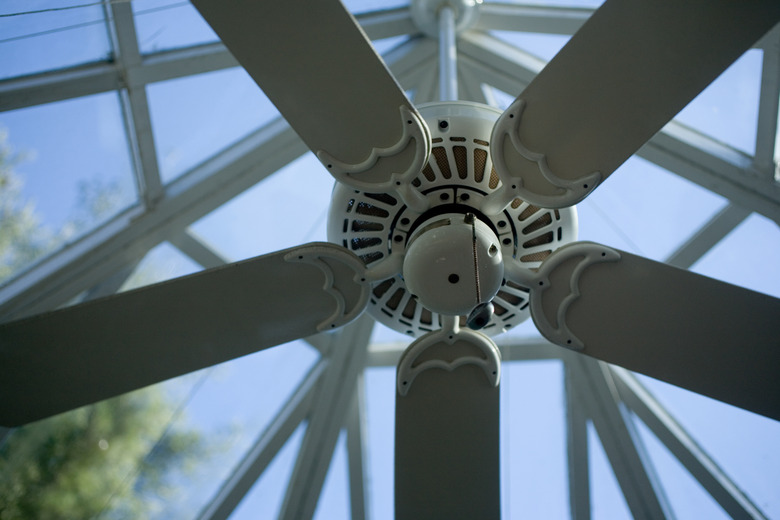How Does A Ceiling Fan Speed Control Work?
Ceiling fans provide two important functions in the home: lighting and air circulation. Controlling the lighting element on a ceiling fan requires nothing more than a standard light switch. The fan control, on the other hand, requires more complex wiring. Fan controls allow ceiling fans to operate at variable speeds and independently of lighting elements. The manner in which a speed control works depends upon the type of technology used.
Wiring
Wiring
A ceiling fan's wiring is integral when it comes to controlling its speed. In order to control the fan's speed, the fan needs its own system of wires, separate from that of the lighting element. If you install a ceiling fan without wiring it properly, it may prove impossible to operate the fan without the light on and vice versa. The wiring also determines whether you control the speed of the fan from a wall switch, string or other mechanism attached to the unit. Consider hiring a professional to set up your ceiling fan if you have limited experience doing so.
Speed Controls
Speed Controls
Two basic types of speed controls exist for ceiling fans: wall controls and controls on the unit itself. Controls on the unit generally have a predetermined number of settings, such as low, medium, high and off. Each time you pull a string or press a button on the unit, it switches from one setting to the next in the line. For instance, you must pull the string three times to go from "low" to "off." Wall controls, such as circular toggles and dimmer switches, allow you to control ceiling fans at a full spectrum of speeds, ranging from off to maximum.
Solid-State Technology
Solid-State Technology
The way in which your fan's speed control actually works depends upon whether it has a capacitor or solid-state control. Solid-state controls change the level of power in the fan motor to control the speed of the fan. For instance, when you switch from medium to high on a solid-state fan, the speed control mechanism increases the power of the motor. Solid-state controls are generally equipped in fans with controls that have predetermined settings, such as low, medium and high.
Capacitors
Capacitors
Capacitors control the flow of power to a fan motor. A capacitor receives 100 percent of the power supplied from a power source to a fan motor and meters how much of that power the motor actually receives. For instance, if you set a wall switch to 33 percent power, the capacitor supplies the motor an appropriate amount of electricity. This allows you to set the fan speed at any level between off and maximum. Because of this, capacitors appear in fans with a full range of speed settings, from 0 percent power to 100.
Wall Switches
Wall Switches
Numerous sources, including the authors of the book "Electrical Wiring Residential," warn against using dimmer switches to control the speed of a fan. While technically speaking you can wire a fan to work this way, light switches work in different ways than fan speed controls. Using a dimmer switch to control fan speed can damage both the fan and the dimmer. Always purchase a wall switch designed specifically for use with fans. Some switches work with solid-state technology, others with capacitors.
References
- "Electrical Wiring Residential"; Ray C. Mullins et al.; 2011
- "Wiring a House"; Rex Cauldwell; 2002
- "The Everything Fix-It Book"; Yvonne Cauldwell; 2004
- Freescale Semiconductor: Ceiling Fan Speed Control
- Hunter Fan: FAQs
